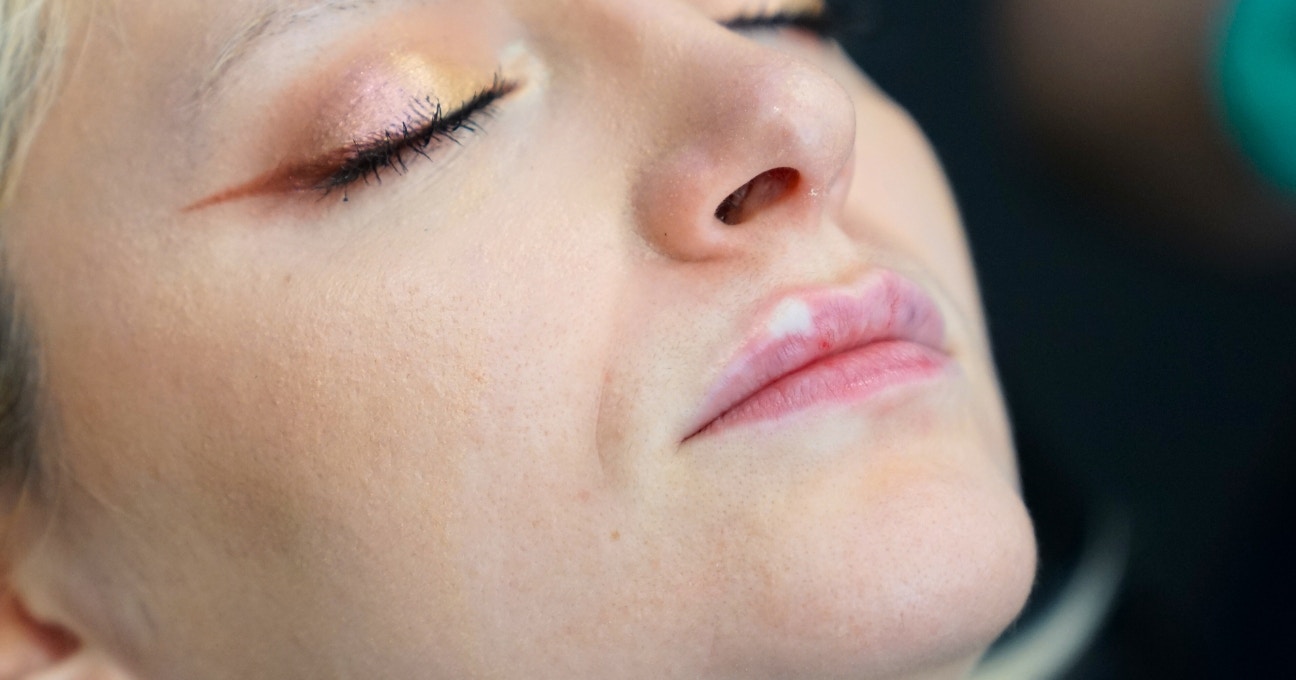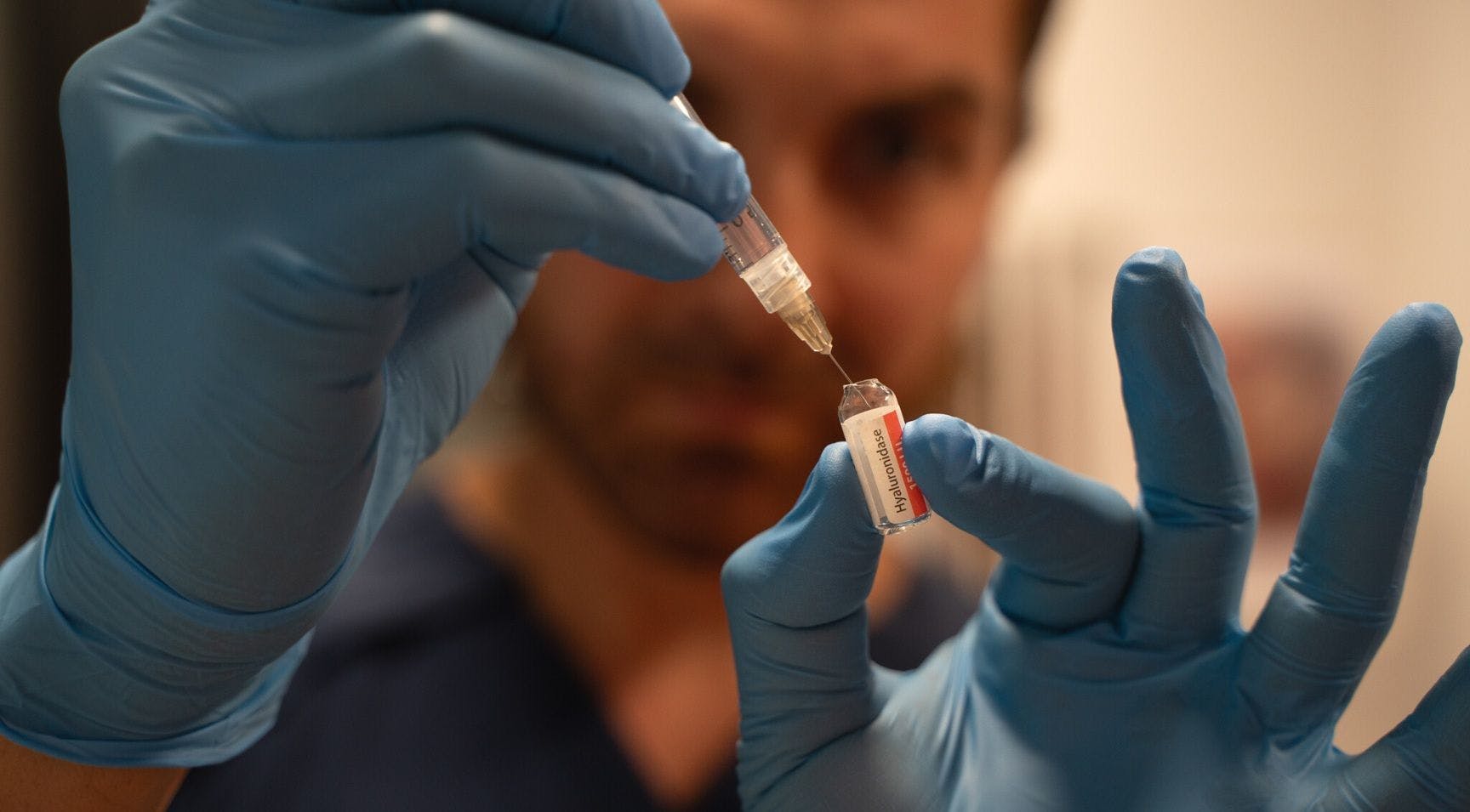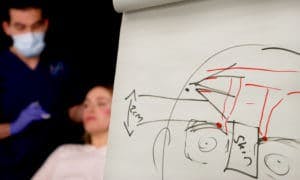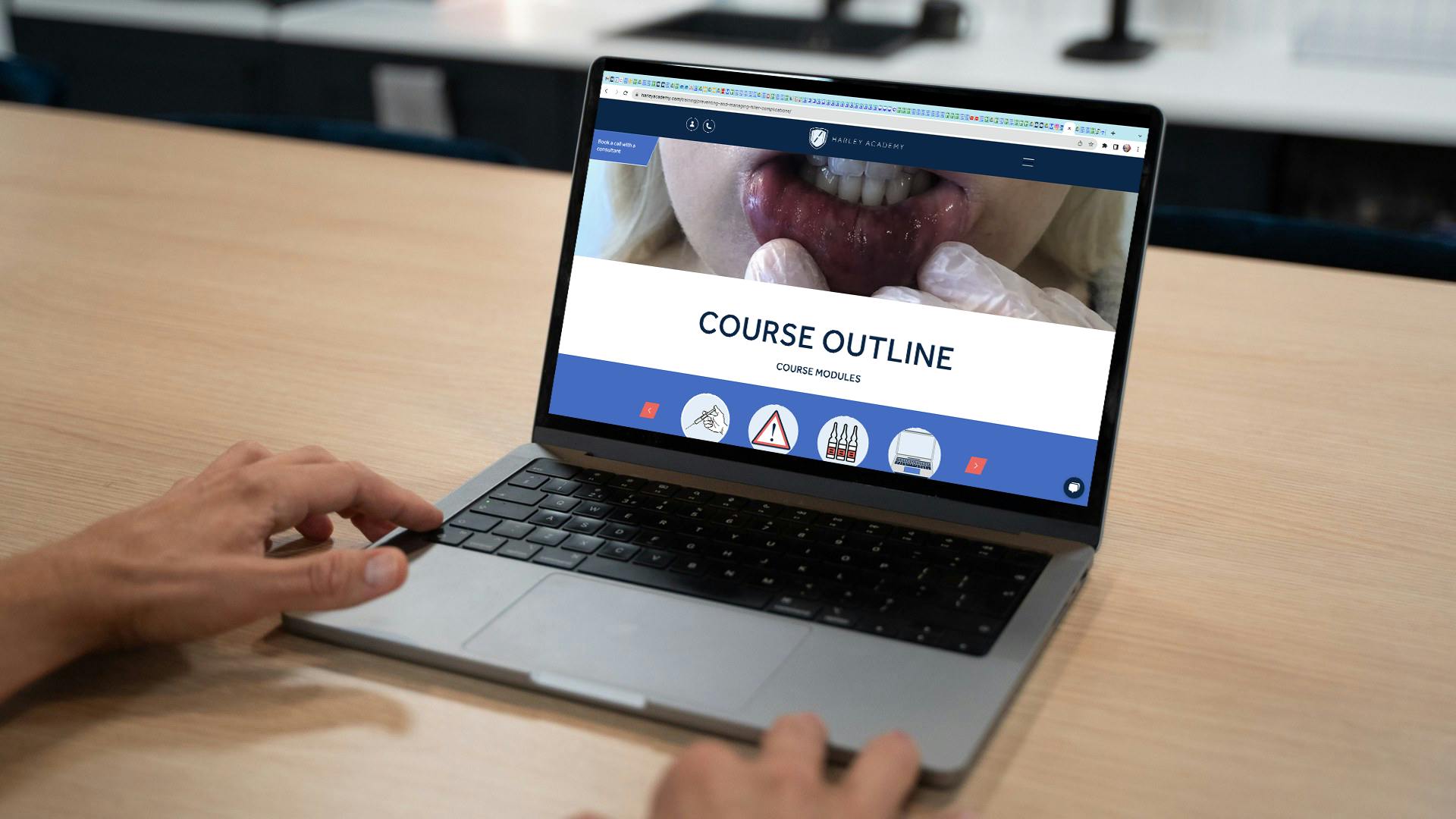Advice on Emergency Protocols For Aesthetics Practitioners

Having a full complement of up-to-date emergency protocols is critical for aesthetics practitioners. Many new injectors may be unsure as to what these protocols are and where to source them from, however.
Having these protocols readily available during what can be a stressful time, is the key to solving issues swiftly and competently, while you seek further advice and support.
We interviewed Dr Jaymi Lad, a Manchester-based aesthetics specialist, Javivo Clinic co-owner, Safety In Beauty Awards nominee and Harley Academy clinical trainer.

Emergency protocol advice for new injectors
Here Dr Jaymi runs us through the basics of emergency protocols for aesthetics practitioners who are just starting out. Read on for her expert advice, as well as our tips for ensuring you stay on top of hyaluronidase protocols to increase your confidence in emergency dissolving situations.

Which emergency protocols do injectors need when they start out?
- Hyalase use (hyaluronidase)
- Anaphylaxis
- Visual loss
- Vascular occlusion
- Delayed onset nodules – inflammatory and non-inflammatory
- Oedema
- Allergy
- Acute Infection
- Herpetic infections
- Tyndall effect
- Vasovagal
- Brow ptosis
- Eyelid ptosis
“I would also recommend looking into your onward referral process to help manage your time-dependent emergency presentations," says Dr Jaymi. "For example, filler-related visual changes or filler blindness.”
You'll also need Health & Safety policies and protocols for dealing with issues such as needlestick injuries, as one example.
Where do you recommend sourcing these protocols from?
“Aesthetic Complications Expert Group – ACE Group – online, Level 7 Diploma eLearning or Complications in Medical Aesthetic Collaborative (CMAC). ACE and CMAC are both organisations set up by experts in the industry who have established evidence-based algorithms/guidance to assist with managing complications.”
It's useful to note that ACE, the Aesthetic Complications Expert Group, and ACE - Aesthetics Conference & Exhibition - are two separate companies. ACE conference is organised by the Aesthetics journal's umbrella company and is not connected to the complications group. Both are worth knowing about as an aesthetics practitioner, though!
How often should you update these protocols and where do you keep them?
“I review these emergency protocols annually and have signed up to updates from ACE and CMAC,” says Dr Jaymi.
She shares, “I have the online versions saved on my work laptop. I also keep a printed copy in clinic next to my emergency box, just in case we ever have any technical issues in clinic!”
This is a really important point as so many of us rely on our devices, yet they are not infallible, so it's good to have a physical backup. This could be a ring binder containing your printed protocols - using tabs to help you flip to the right one in an emergency situation can be helpful. Otherwise, printing out each protocol and sticking them to the inside of your cupboard doors is common.

What does your emergency kit look like?
“My emergency kit is actually in a separate box," notes Dr Jaymi. "I like to keep it separate from my usual equipment so I can access it easily in an emergency. I bought a small toolbox from B&Q as tool boxes have dividing compartments within the box. This makes it easier to find needles and vials in a rush as it’s pretty organised. On the lid of the box, I have a list of everything that’s inside with the expiry date written next to it.”
How often do you check your emergency kit to ensure everything is in date?
“I check my emergency box on a monthly basis," she advises. "The list on the top helps to remind me to replace anything when required.”
Top tip: Run regular emergency protocol drills
In addition to, as Dr Jaymi says, checking your emergency kit every month to ensure all supplies are present and in date, we highly recommend running regular emergency protocol drills.
For example, if you had to dissolve filler in an emergency situation, would you...
- Know where your hyaluronidase stock and saline supplies are kept?
- Be confident the Hyalase was in date and there was enough of it?
- Know how to prepare the vials?
- Be confident in administering hyaluronidase and monitoring the patient afterwards?
If the above points are not second nature - and, if they are, to ensure they stay that way - we advise conducting hyaluronidase drills. You may wish to invest in a training mannequin to practice the injection technique steps on. These high fidelity heads can also come in useful when demonstrating certain areas and treatments to patients so can be a worthwhile investment.
Once a quarter to twice a year, practice emergency scenarios to familiarise yourself with the steps. This is a particularly valuable exercise for visual and practical learners who would otherwise be relying purely on theory.
As part of this drill, you may also wish to watch training demonstrations on reconstituting hyaluronidase and dealing with complications.

Learning to prevent and manage complications from injectables
As – thankfully – complications are not something you come across regularly, training is not a hands-on experience – until it actually happens to you. And it will. Every injector, from beginners to experienced specialists, deals with occasional complications throughout their aesthetics career.
Learning to prevent and manage complications is a hugely worthwhile pursuit. Not only will this educate you in best practice and the relevant anatomical considerations involved. It will also help you to manage any issues that do arise, building your confidence through thorough preparation.
We offer a wide-ranging eLearning course, packed with resources for you to keep and use throughout your career. This includes a range of printable emergency protocols for you to use in clinic. Our Preventing and Managing Dermal Filler Complications online course is available for all medical aesthetics professionals to purchase.
Furthermore, this is included free of charge with our Level 7 Diploma in Cosmetic Injectables courses!
If you're not ready to commit to a full postgraduate diploma, our shorter, more flexible botox and filler course, The Aesthetics Accelerator, also covers complications in a robust way.
Using the Global Evidence Matrix for best practice and risk intelligence
The Global Evidence Matrix (GEM) is also a fantastic resource for preventing complications.
You'll find the risk profiles and best practices for each filler treatment clearly detailed in the GEM app. Additionally, you can look up which practitioner experience level, or 'Development Stage', each treatment is suited to, allowing you to keep to your scope of competency.
GEM's information is based on the latest evidence and updated regularly to ensure it's inline with the most current guidance.
All Harley Academy aesthetics courses are taught using GEM principles. Additionally, the GEM by Harley Academy app is available as a subscription service, with our Level 7 trainees receiving a free 12-month membership.
For further information on our aesthetics training options or to discuss your requirements, book a call with our Courses team. They’ll be happy to provide advice and answer your questions so you can find the best pathway to getting Harley Trained and learning to prevent complications from occurring in the first place!
All information correct at time of publication
Download our full prospectus
Browse all our injectables, dermal fillers and cosmetic dermatology courses in one document
By submitting this form, you agree to receive marketing about our products, events, promotions and exclusive content. Consent is not a condition of purchase, and no purchase is necessary. Message frequency varies. View our Privacy Policy and Terms & Conditions
Attend our FREE open evening
If you're not sure which course is right for you, let us help
Join us online or in-person at our free open evening to learn more
Our Partners













STAY INFORMED
Sign up to receive industry news, careers advice, special offers and information on Harley Academy courses and services

